A Light From Phipps
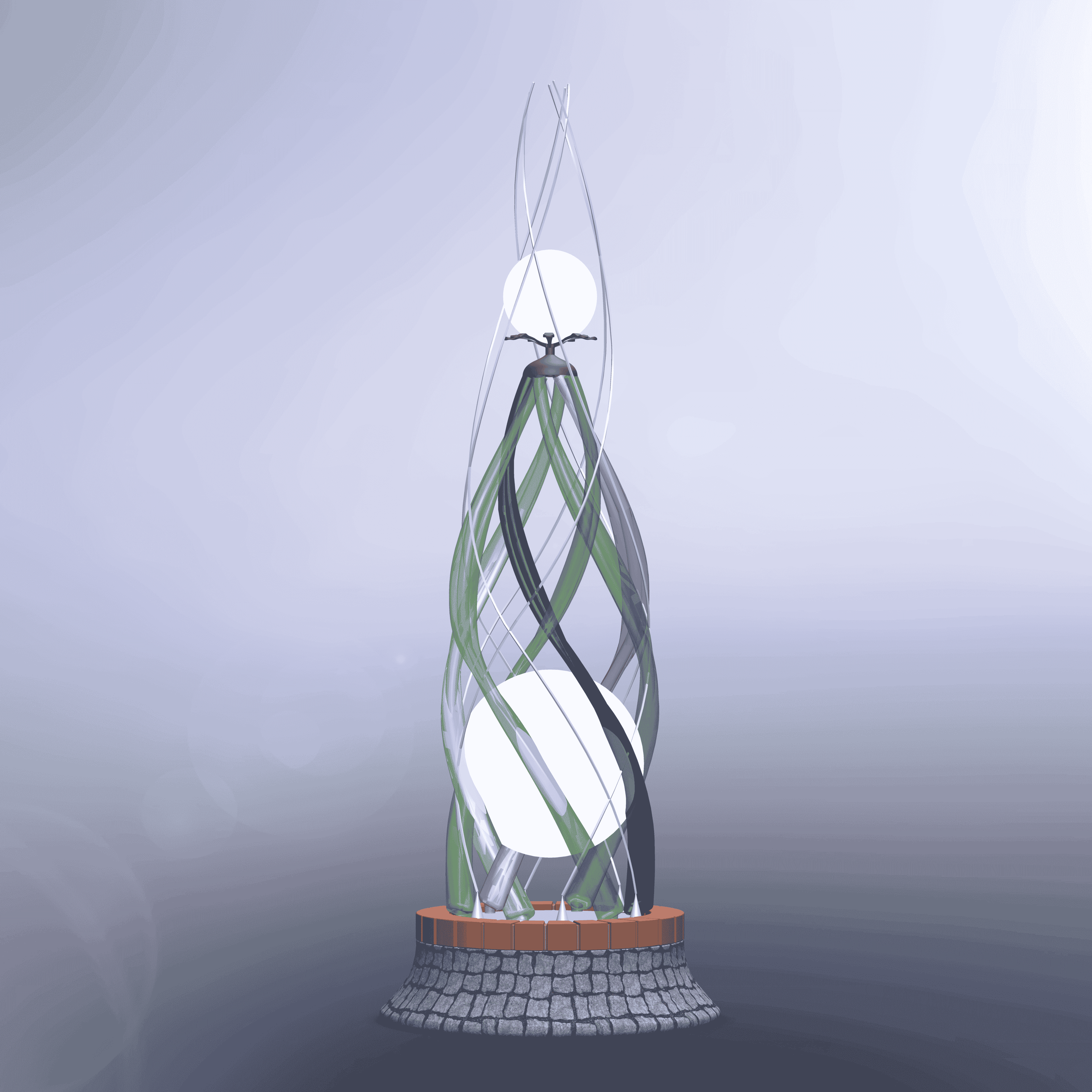
March - April 2024
I designed a floor lamp to capture the spirit of Phipps Conservatory, integrating architectural, historical, visual, material, color, and/or botanical elements, reflecting the distinctive traits and motifs that characterize Phipps Conservatory. The form of the lamp is directly influenced by the architecture of the conservatory, blending natural curves with structural elements, and the materials and colors used are inspired by the plants and flowers found within. The lamp is designed to evoke the same sense of calm, beauty, and wonder that I feel when I visit Phipps. I modeled the mockup entirely in Solidworks CAD, demonstrating organic forms, mixed organic and industrial materials, and suspensions of light. The floor lamp is intended for use in a living room or bedroom, providing a focal point and a source of ambient light.
Results Preview:
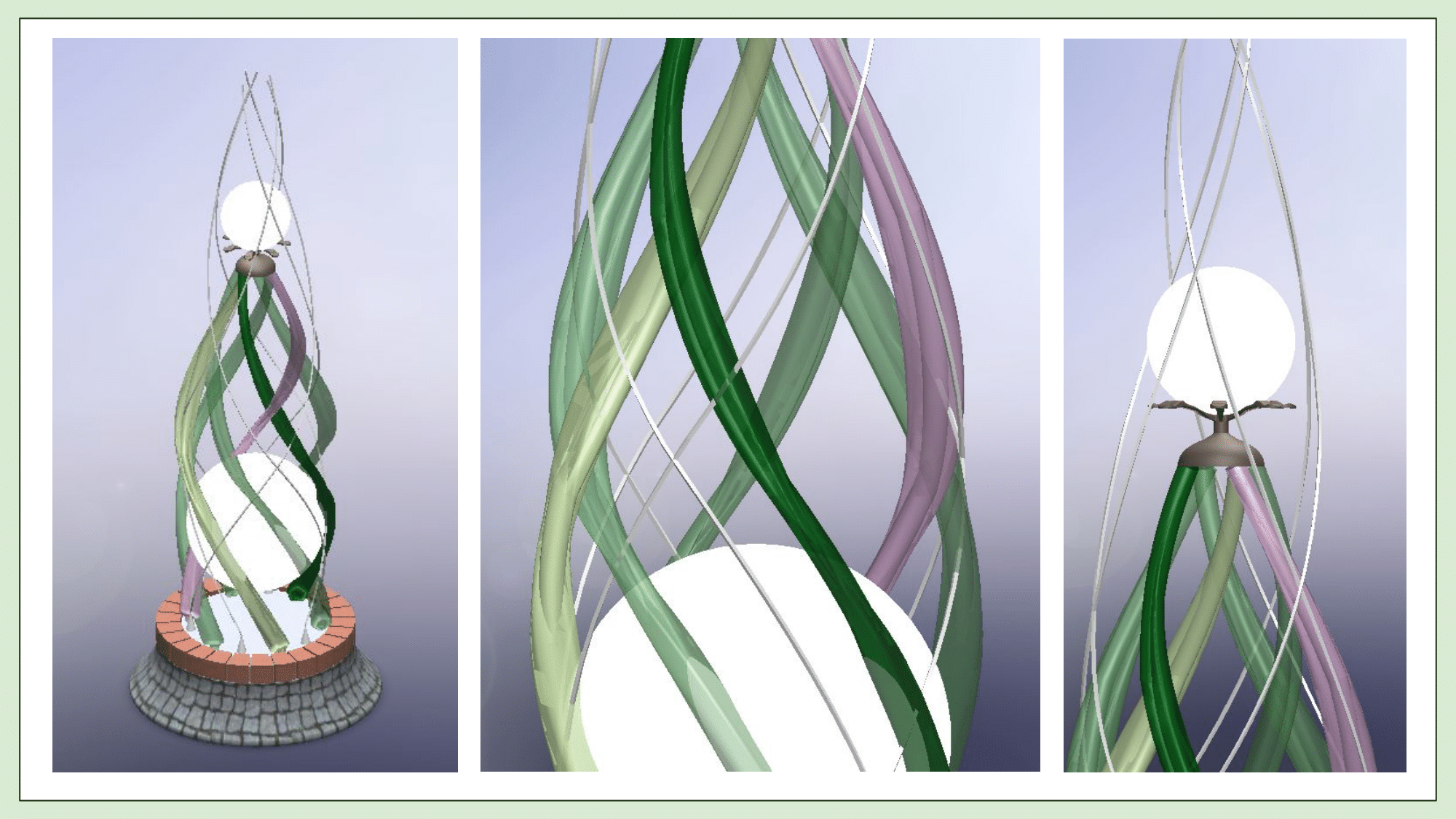
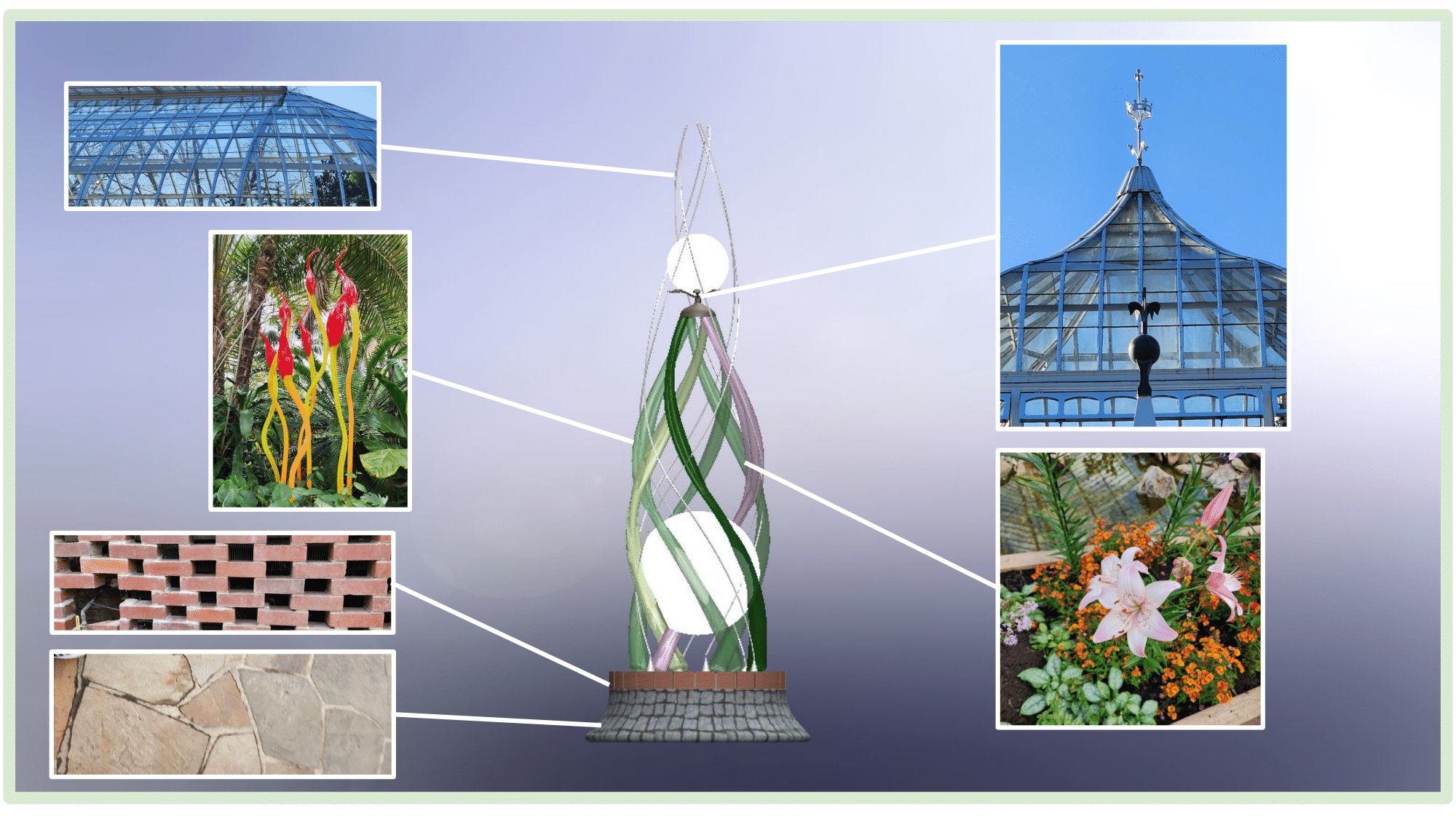
Assignment: Design a commercial product that captures the essence of a place in Pittsburgh.
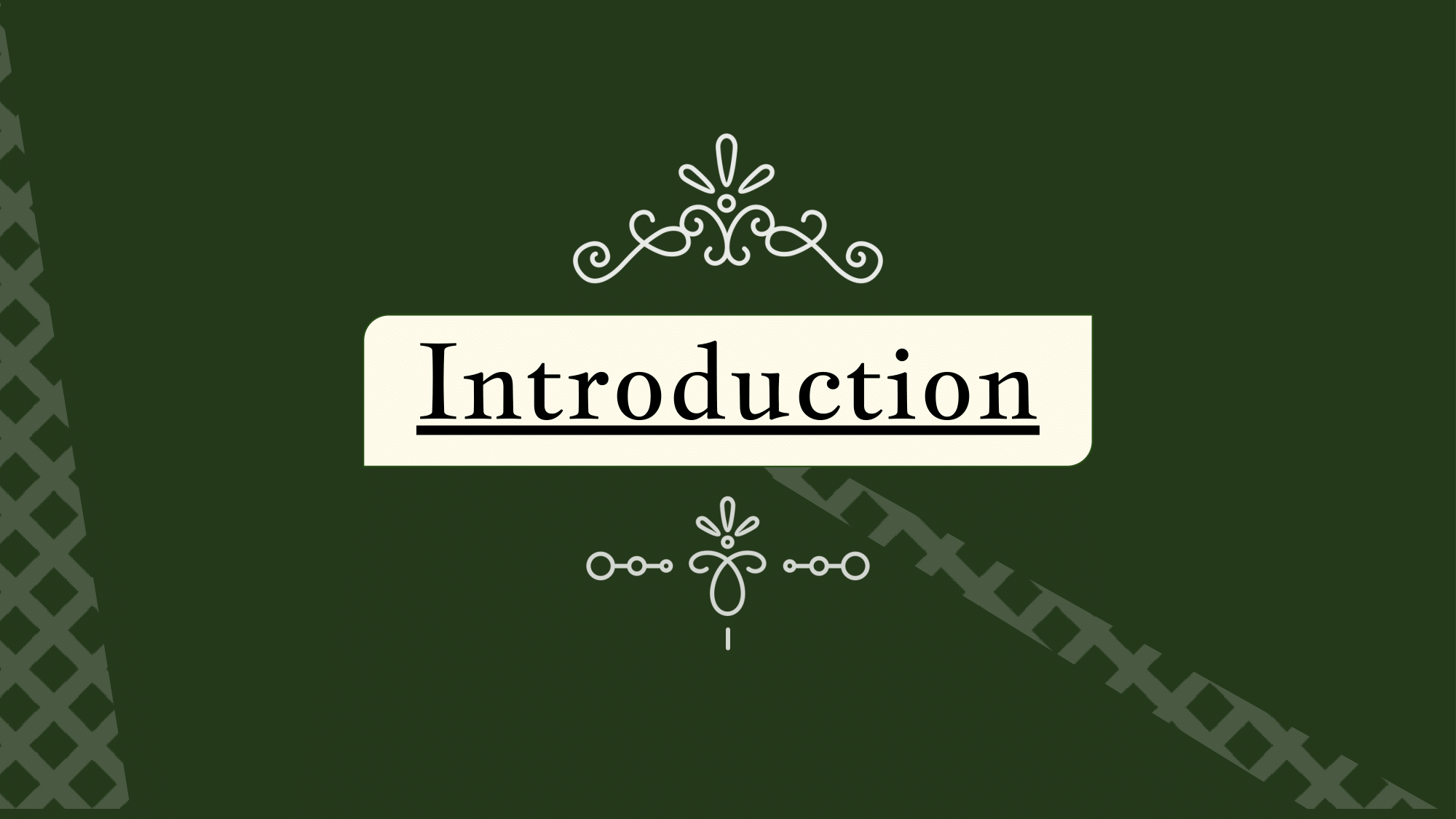
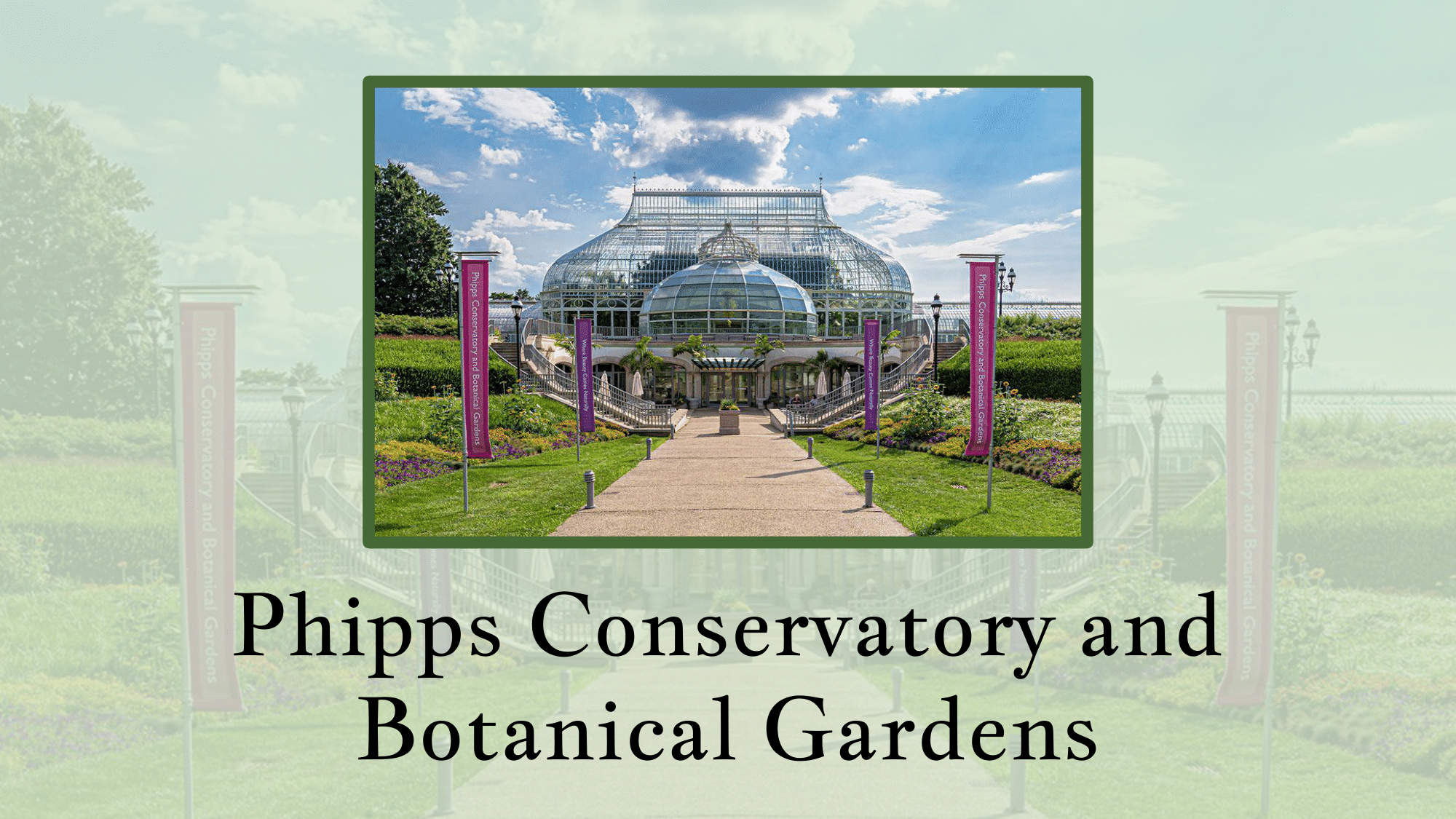
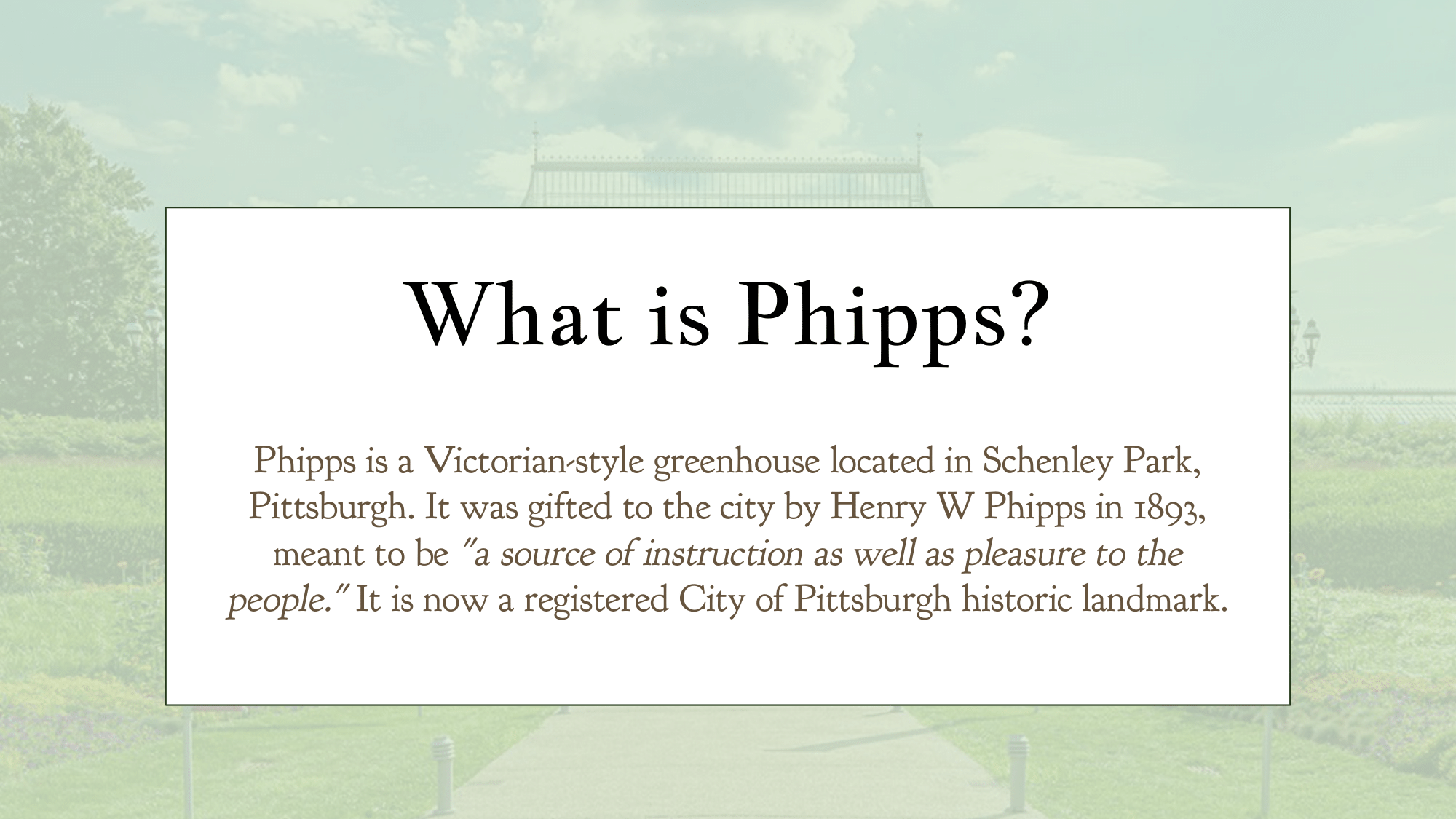
The place I chose as my inspiration was the Phipps Conservatory and Botanical Gardens. I live
very
close to Phipps, and I've visited it several times while being in Pittsburgh. I chose it because
every time I go, I feel better. It's peaceful: a cozy, warm, greenhouse that allows you to be
amongst nature, especially during the coldest and dreariest of Pittsburgh winter days. And yet, there's
also a sense
of playful exploration with its rotating exhibits, pops of color, and smaller interactive
components. I wanted to capture that feeling in a product that could be used in at home. The lamp I
designed is meant to evoke the same sense of calm, beauty, and wonder that I feel when I visit
Phipps.
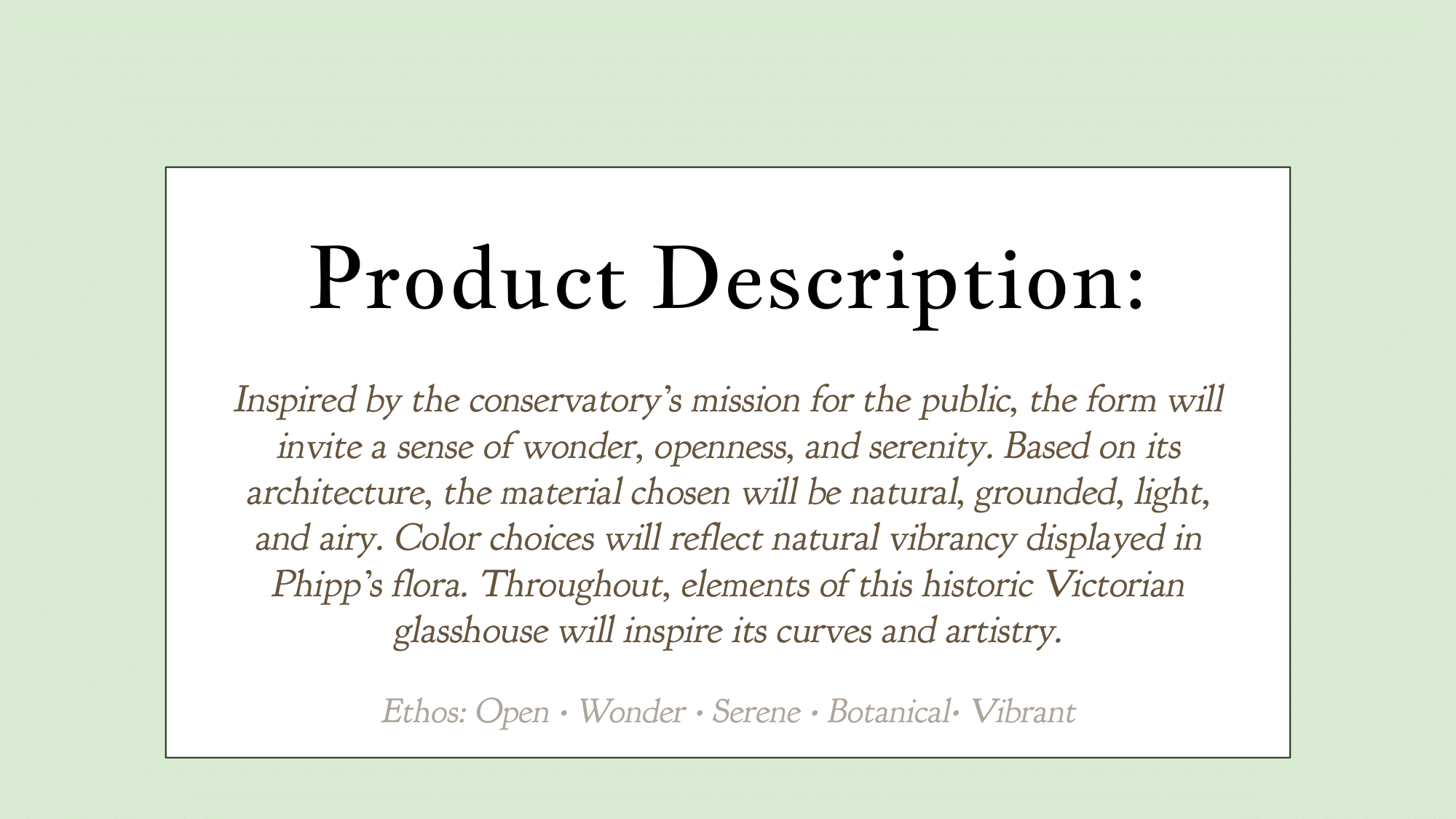
Research: a comprehensive study of the Phipps Conservatory.
Background:
I began with a study of Phipps: both the physical space and its history. Throughout its history, Phipps has always been a place for the public. When it first opened in 1893, people flocked to Pittsburgh from all over the country to see Phipps' intricate displays. It has always been open to anyone, and people would come during work breaks, on the weekends with their loved ones to enjoy the greenhouse.
Phipps is an 1893 Victorian greenhouse, featuring a sophisticated glass and metalwork structure that offers an interesting example of Victorian greenhouse architecture. The collaborative relationship with Pittsburgh’s flower arrangement artisans and local artists is also a unique aspect of Phipps. The design for this project will carry the ethos through its materials, structure, and form. Inspired by the conservatory’s mission for the public, the form will invite a sense of wonder, openness, and serenity.
My Observations
I visited Phipps to figure out what made Phipps feel like Phipps. I took over 200 photographs while I was there, trying to document everything I thought was iconic or interesting, and also keeping track of materials. I created a series of thumbnail sketches to supplement my analysis and find the common motifs: mission for the public, glass sculptures, Victorian architecture, and of course, nature.
Based on its architecture, the material chosen will be natural, grounded, light, and airy. Color choices will reflect natural vibrancy displayed in Phipp’s flora. Throughout, elements of this historic Victorian glasshouse will inspire curves and artistry.
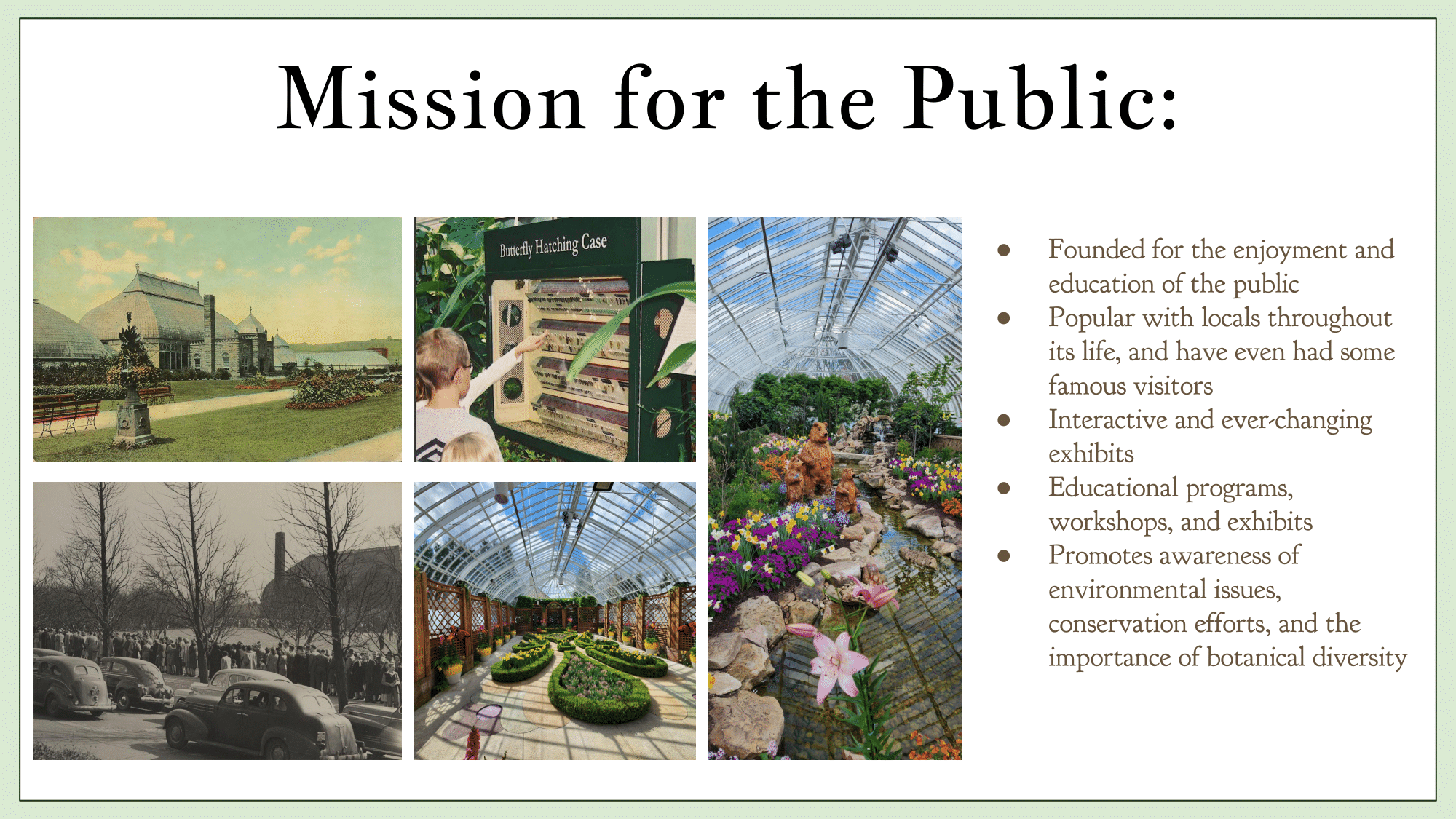
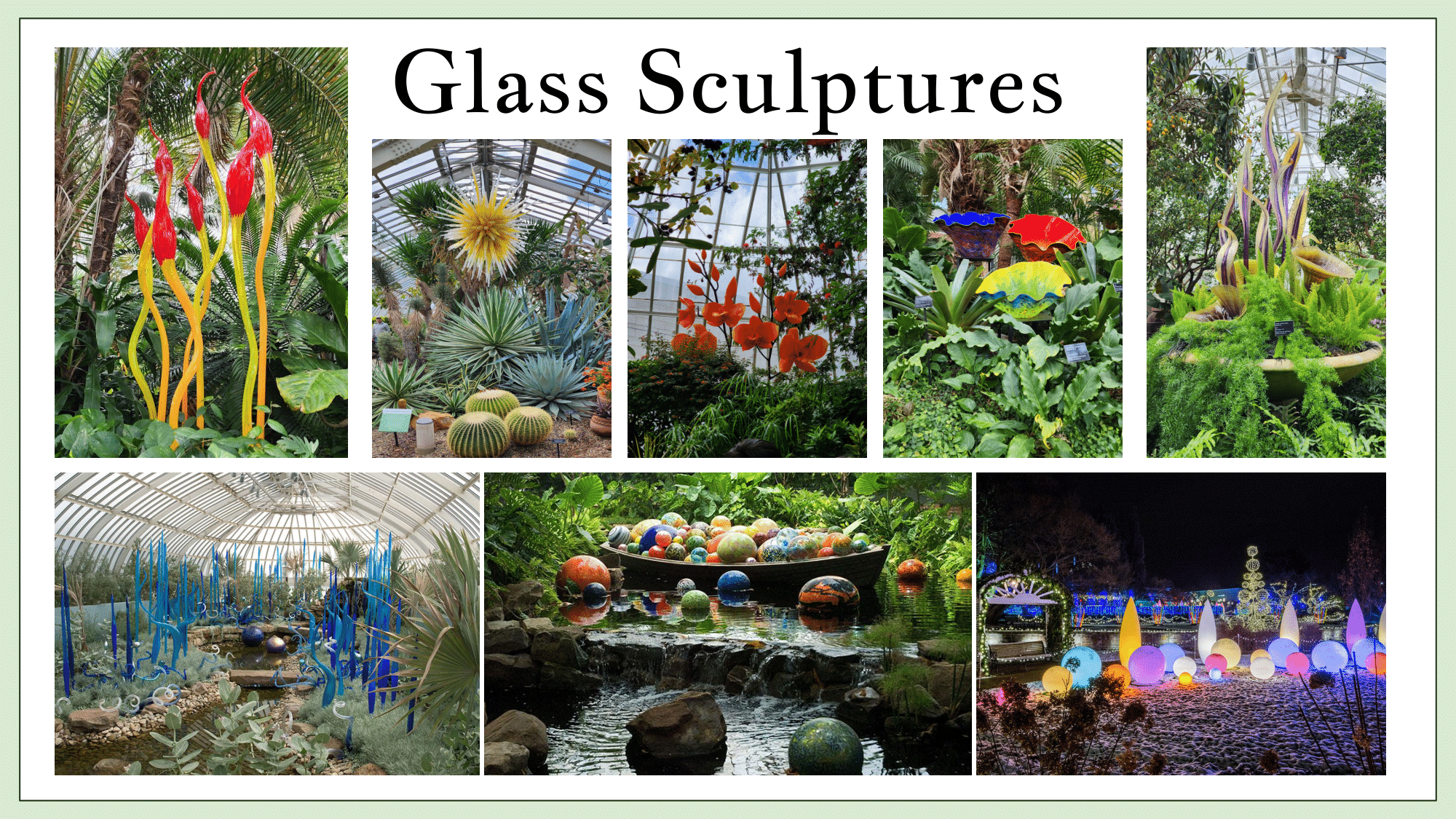
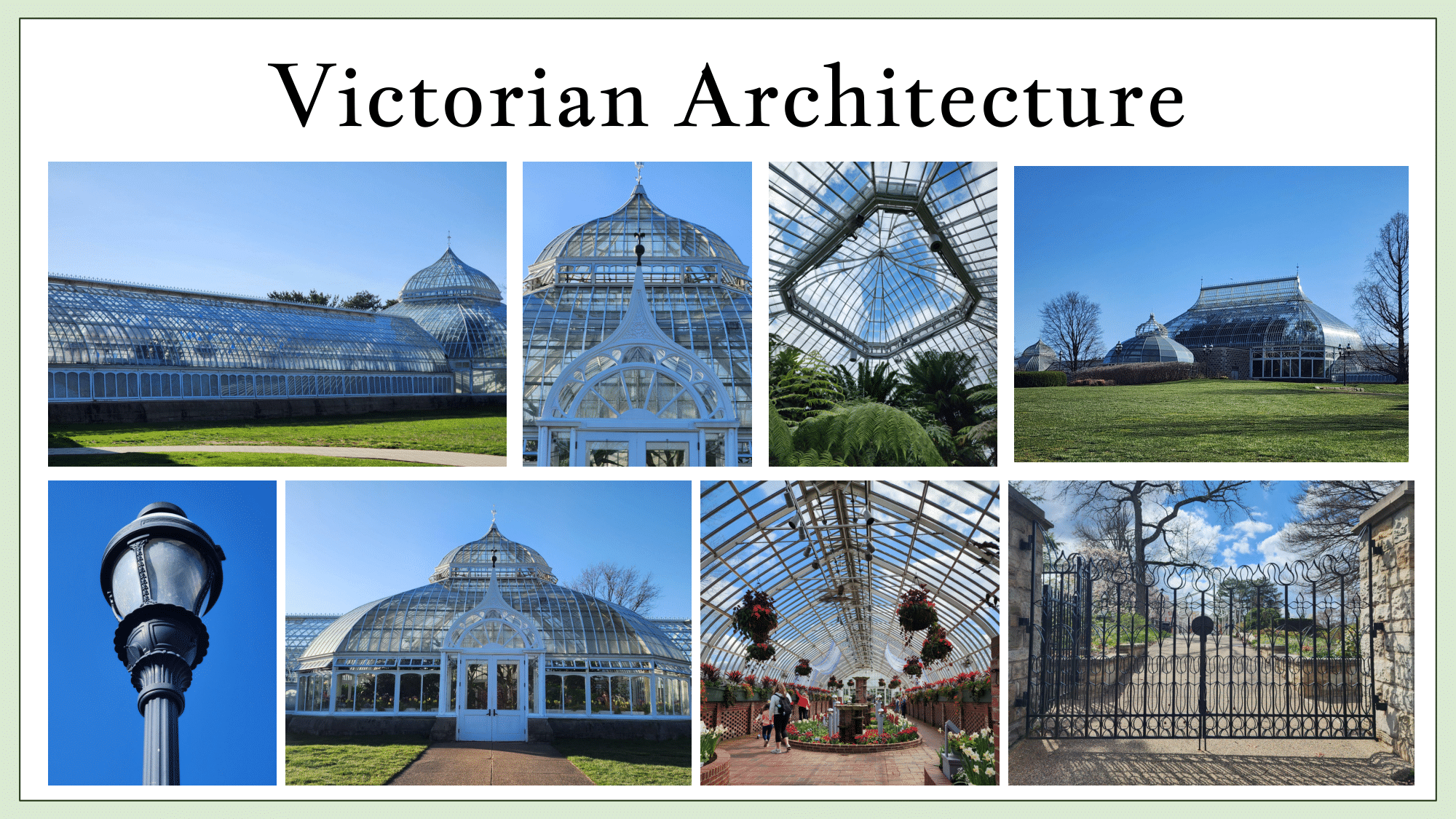
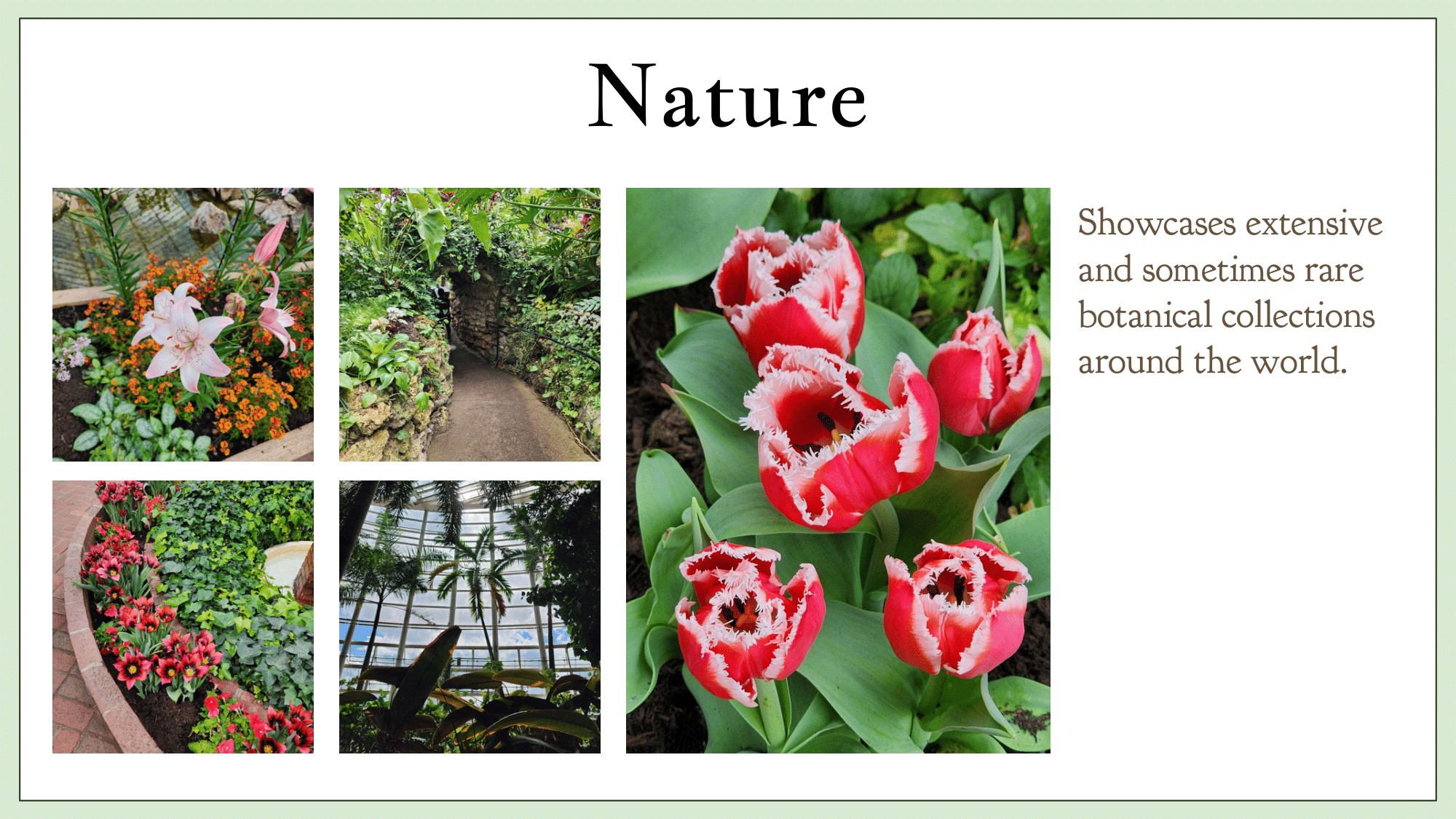
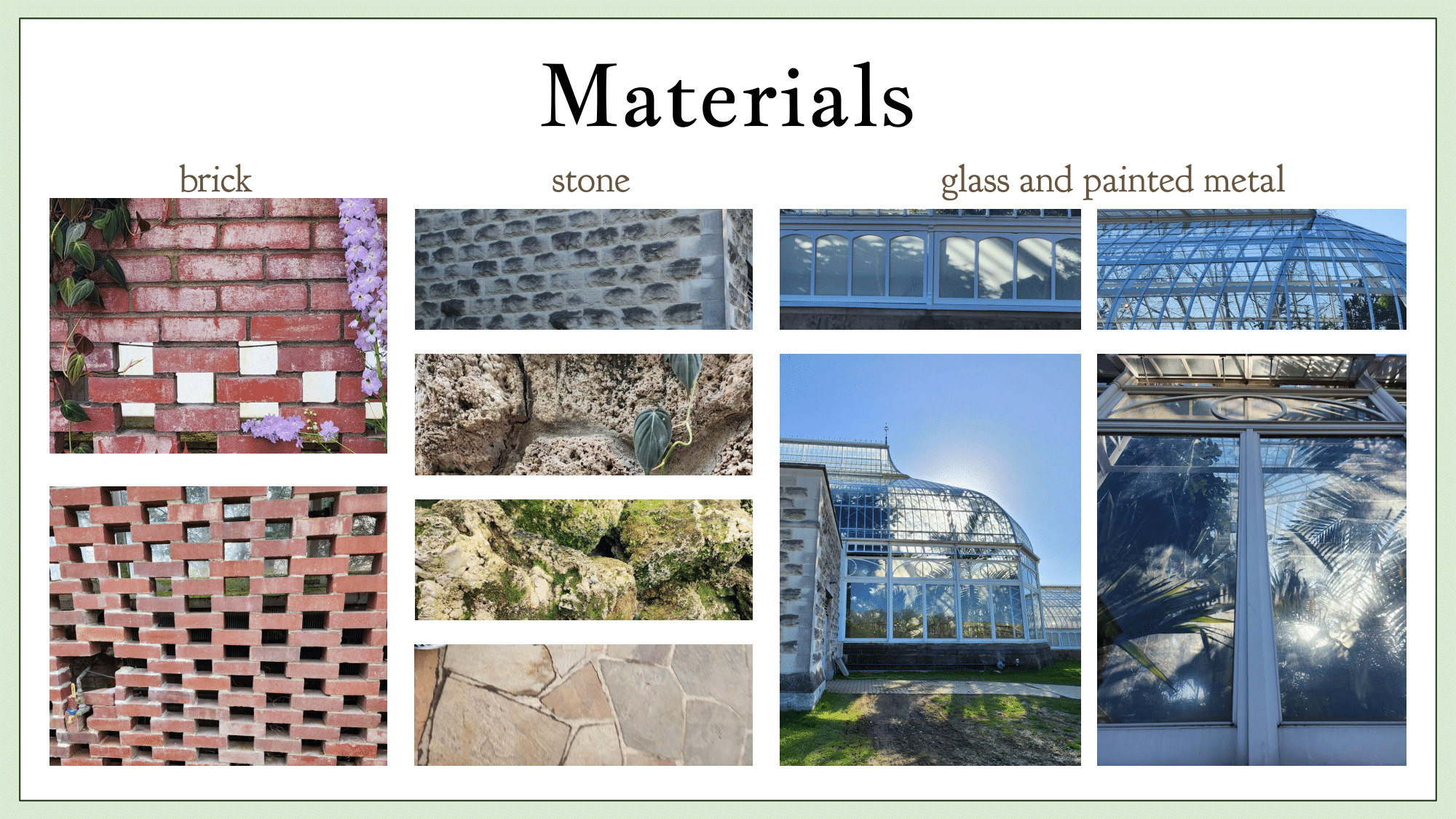
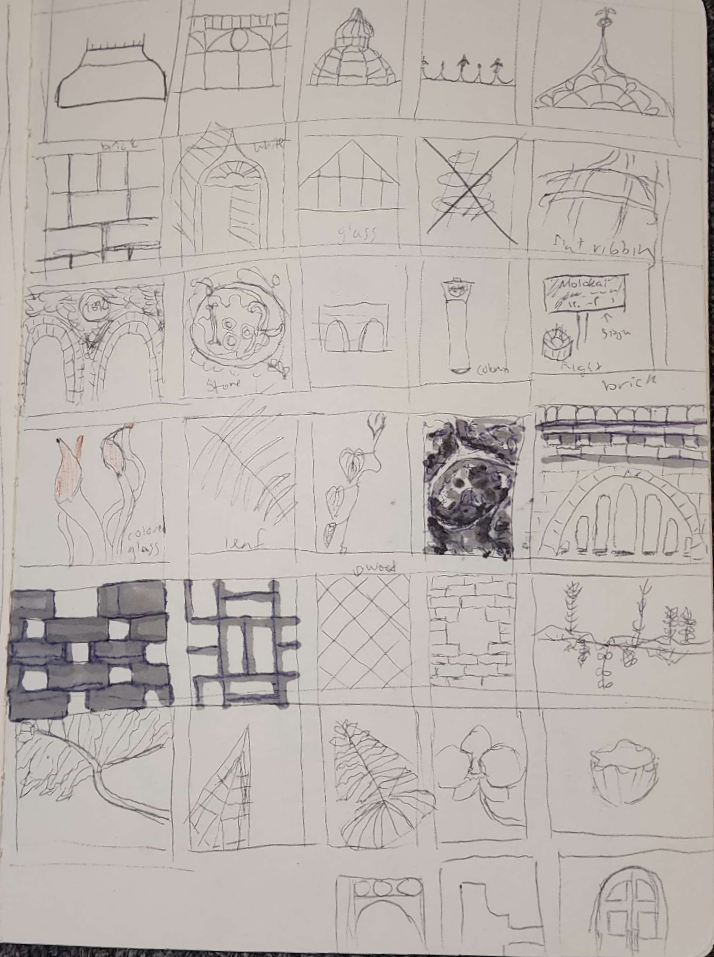
Developing Form through Sketches and Market Research

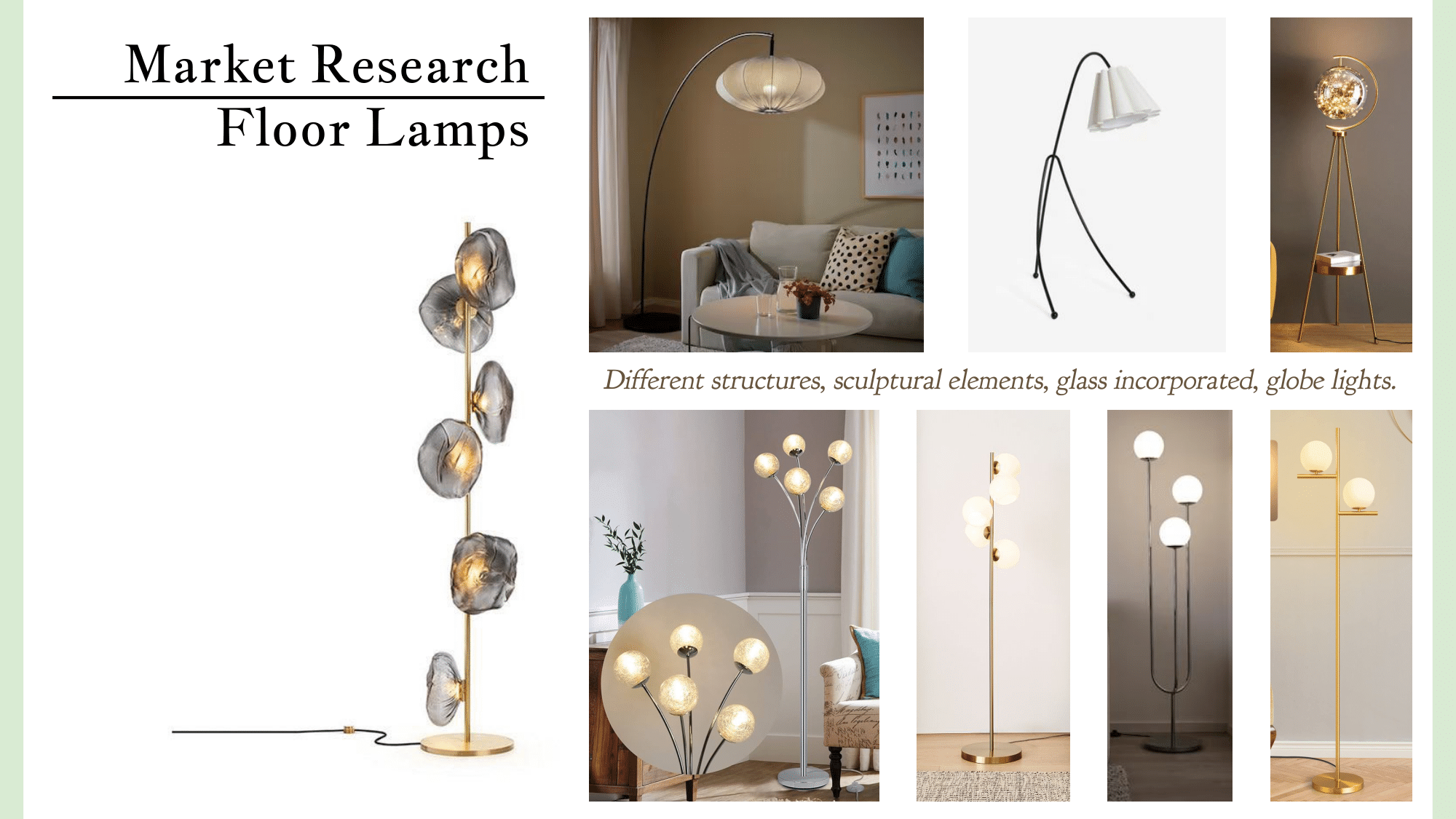
Through my market research, I was attracted to the floor lamps that were more statement pieces: they created dynamic curves and structures (not just a pole straight up and down). I also liked the globe lights as I think it can help match Phipps' elegance and wonder. I also liked the incorporation of glass, and how it interacts with the light.
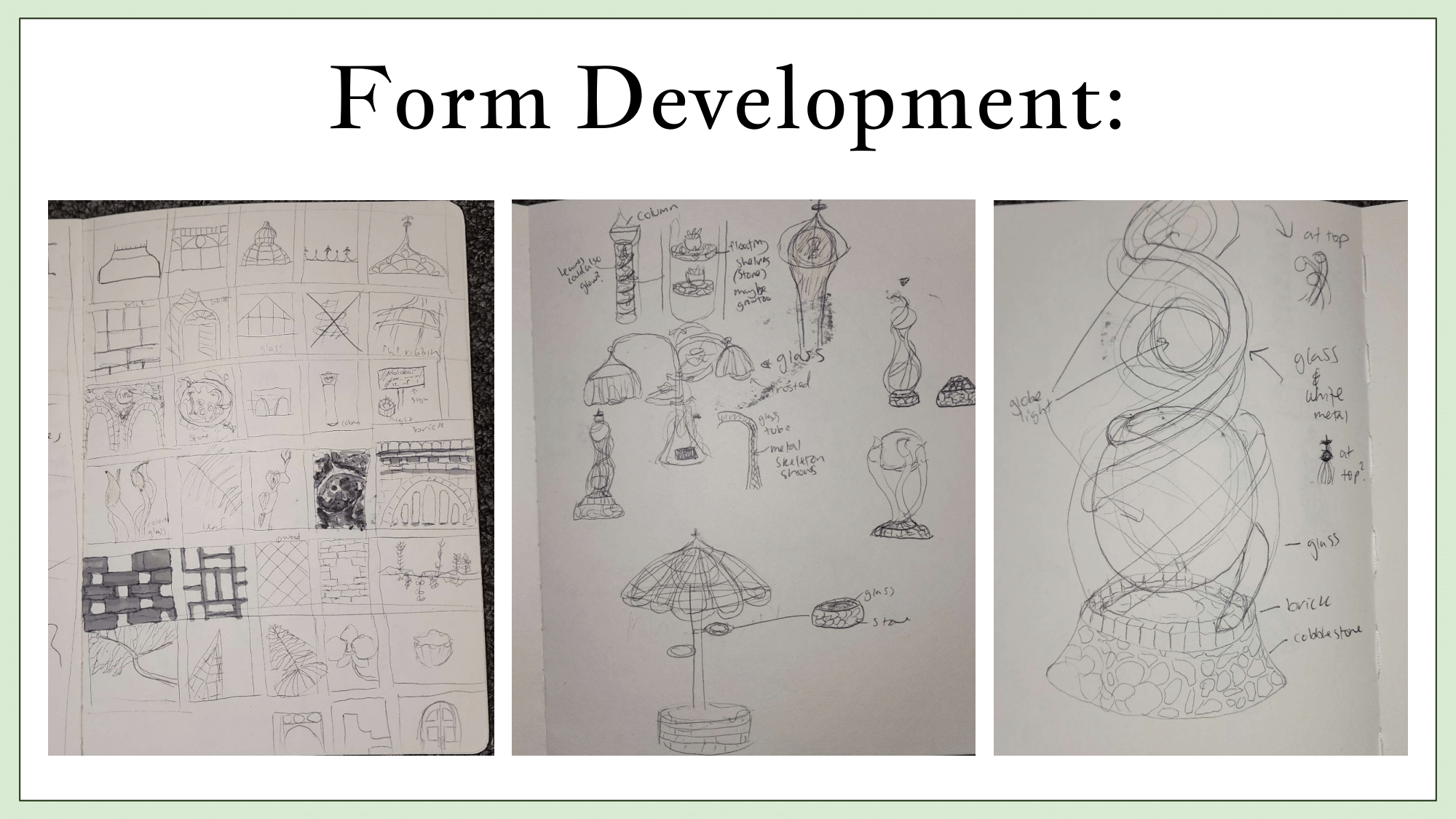
Final Design
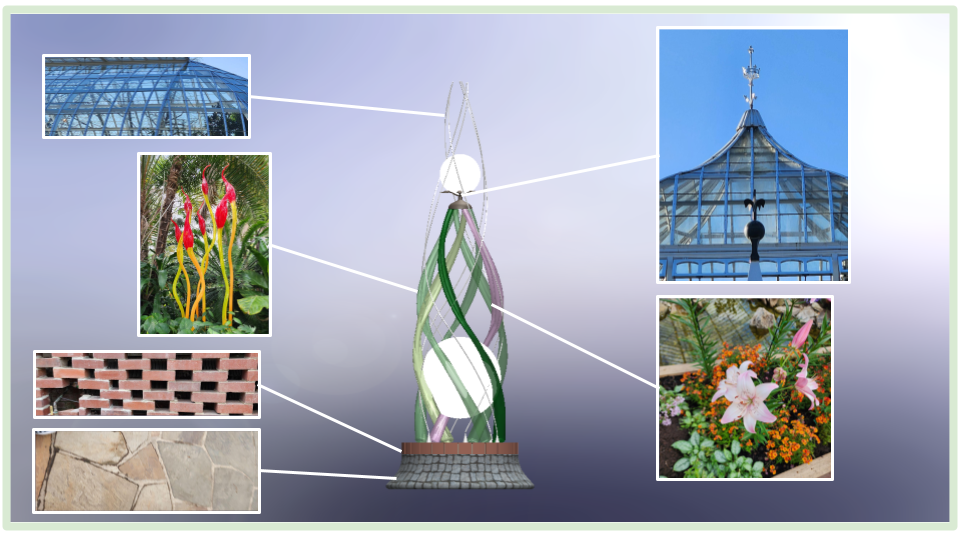
The final lamp design captures the essence of the Phipps Conservatory with its elegant form and thoughtful use of materials. The lamp is made of a combination of glass, steel, and wood, with a color palette inspired by the plants and flowers found in Phipps Conservatory. The base is made of stone and brick, two weighty components that are prominent inside Phipps, that ground the floor lamp. A blue-tinted mirror atop the base mimics the water exhibits found in Phipps as well. The taller, thinner white lines are inspired by the greenhouse's iconic external white lattice structure. Amongst the lattice, there are pieces of organically curved glass, reflecting the natural beauty housed within: green stems, with a pink accent for the flowers. The glass component is also inspired by the numerous glass sculptures consistently displayed at Phipps. There is a Victorian styled steel cap, modeled by tracing over an image of a similar component at Phipps. And finally, the lights themselves are to look like orbs of light suspended amongst everything else, creating a sense of wonder. The lamp would be touch-activated: touching any of the metal components would allow the user to turn the lamp on and off, and also to change the colors of the orbs. The lamp is designed to be energy-efficient, using LED technology to provide a warm, inviting light source. The use of natural, sustainable materials and LED technology further enhances the design, aligning with modern trends in environmentally conscious product design, and aligning with the Phipps mission.